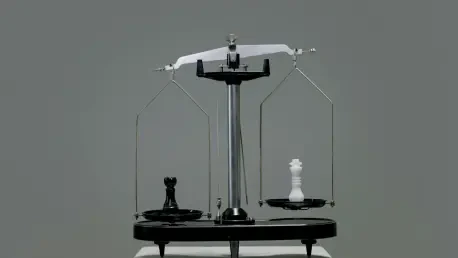What happens when a worker gets hurt on the job, battles through pain, but lands a better-paying role? Should their compensation shrink because their paycheck grew, or should it reflect the lasting damage to their body? A groundbreaking ruling by the Iowa Supreme Court has tackled this thorny issue head-on, reshaping how benefits are calculated for injured workers across the state. This decision, rooted in a real-life struggle, cuts through years of legal fog, promising a clearer path for thousands navigating the aftermath of workplace injuries. Dive into a story of resilience, legal clarity, and the fight for fairness that could impact every employee and employer in Iowa.
Why This Case Resonates Now
The significance of this ruling cannot be overstated in a state where workplace injuries remain a pressing concern. With over 30,000 nonfatal occupational injuries reported annually in Iowa, according to recent Bureau of Labor Statistics data, the workers’ compensation system serves as a critical safety net. Yet, for too long, ambiguity in calculating benefits—especially when a worker returns to equal or higher pay—has fueled disputes, delayed justice, and frustrated all sides. This landmark decision addresses a gap that has lingered in the system, offering a definitive standard at a time when both workers and businesses crave predictability.
This isn’t just about legal jargon; it’s about real people and real outcomes. The court’s verdict responds to a growing demand for equity in a workforce where injuries can derail lives, even when paychecks don’t shrink. By setting a clear benchmark, the ruling promises to reduce courtroom battles and streamline claims, ensuring that the focus shifts from speculation to tangible harm. It’s a pivotal moment that speaks directly to the challenges faced by Iowa’s labor force today.
The Heart of the Matter: Tyler Dungan’s Fight
At the center of this legal shift is Tyler Dungan, a loader and material handler who faced a life-altering injury in 2019 while working at Den Hartog Industries. Lifting a heavy 70-pound hoop, Dungan suffered a severe back injury—diagnosed as a disc herniation and annular tear—that left him in persistent pain. Despite this, he pushed through, returning to his job with a pay bump and a 40-pound weight restriction, later moving to higher-paying roles at Meridian Manufacturing and Gomaco. His earnings climbed, but the ache in his back never fully faded.
When Dungan sought workers’ compensation, the initial ruling granted him benefits based on a 15% loss of earning capacity using the industrial method, a calculation factoring in potential future income dips alongside physical harm. Den Hartog Industries and its insurer, West Bend Mutual Insurance Company, challenged this, arguing that since his pay never dropped, benefits should hinge solely on bodily impairment. This disagreement spiraled through lower courts, each upholding the original award, until the Iowa Supreme Court stepped in with a game-changing perspective.
A Bold New Standard Unveiled
The Iowa Supreme Court’s decision, interpreting Iowa Code section 85.34(2)(v), delivered a sharp and unambiguous standard: when an injured worker returns to work at the same or higher pay, benefits must be calculated based only on functional impairment—the measurable physical impact of the injury. Speculation about future earnings loss, as used in the industrial method, was deemed irrelevant in such cases. This overturned prior rulings in Dungan’s case, remanding it for recalculation focused strictly on medical evidence of his back condition.
This precedent isn’t a mere tweak; it’s a binding statewide shift that prioritizes concrete data over guesswork. By anchoring benefits to physical harm rather than hypothetical financial setbacks, the court has crafted a framework that aims to simplify claims and curb endless litigation. Legal analysts predict this will impact countless cases, providing a consistent lens through which insurers, employers, and workers can assess compensation fairly.
Voices from the Trenches Weigh In
Stakeholders across the spectrum have reacted to this ruling with a mix of relief and reflection. A seasoned Iowa workers’ compensation attorney remarked, “This cuts through the haze. It’s a victory for consistency—workers get benefits tied to their actual injury, and employers aren’t guessing about future costs.” This sentiment echoes a broader push in legal circles for decisions grounded in statutory clarity, as the court leaned heavily on the exact wording of the law to shape its verdict.
Claims adjusters, too, see a silver lining. One shared a story of a drawn-out case where debates over earning capacity drained time and resources, noting, “With this standard, that fight could’ve ended sooner. Focusing on impairment alone saves everyone a headache.” These perspectives highlight how the ruling resonates on the ground, aligning with a national trend in workers’ compensation law to favor objective metrics over subjective forecasts, ensuring that outcomes better match reality.
Charting the Path Ahead for All Involved
With this new legal benchmark in place, practical steps are essential for navigating the updated landscape of workers’ compensation in Iowa. Injured workers should prioritize detailed medical documentation of their physical limitations, as benefits now depend entirely on impairment ratings rather than income projections. Comprehensive evaluations from healthcare providers will serve as the cornerstone of any claim under this standard.
Employers, on the other hand, must adapt by revising internal protocols to align with the court’s directive. Training for human resources and safety teams should emphasize medical assessments over concerns about future earnings when a worker returns at equal or greater pay. Insurers, meanwhile, are encouraged to refine claims processes, collaborating with medical experts to ensure calculations rest on solid, verifiable data, minimizing the risk of disputes. For all parties, staying abreast of Iowa Code section 85.34(2)(v) and seeking legal guidance in complex cases will be key to avoiding missteps in this clarified system.
Reflecting on a Milestone Moment
Looking back, the Iowa Supreme Court’s ruling stood as a turning point in the state’s approach to workers’ compensation, bringing much-needed precision to a once-murky process. It redefined fairness by tethering benefits to the physical toll of an injury, not the unpredictable whims of future earnings, for those who returned to work without financial loss. Tyler Dungan’s journey through pain and perseverance became the catalyst for a broader shift, one that touched countless lives across Iowa.
Moving forward, the focus should remain on building stronger support systems—ensuring medical evaluations are accessible and accurate, and that both workers and businesses understand their rights under this precedent. Collaboration among insurers, employers, and legal advisors will be vital to sustain the efficiency this decision introduced. As Iowa’s workforce continues to evolve, exploring ways to prevent injuries altogether, alongside fair compensation, emerges as the next critical step in safeguarding the state’s labor community.









